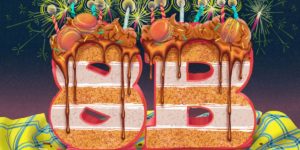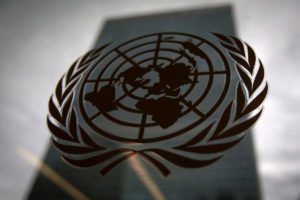Coyote Marie Hunter-Ripper is a Cherokee Traditional Practitioner. She is the Director of A.N.E.W. (All Nations Education and Wellness), offering classes, workshops and speaking engagements. She is an international volunteer for human rights and social/civil justice, with an emphasis on empowering women. She makes her home in Oregon, USA.
Written by Amanda Provenzano
Supported by Elder Coyote Marie Hunter-Ripper
While death is the inevitability of humanity, not all cultures view this life transition with the same reverence. Many signs point to the terror of death evidence in non-Native society. The constant messaging to sanitize, shelter, and protect from our own humanity is blatantly obvious in Western society. Everything from the medical system to advertising says, “avoid getting old” at all costs. Dye your hair, smooth away wrinkles, forget about grandma as she ages into thin air.
However, this lack of awareness around death and the denial of the inevitable is not a prevailing experience for all cultures. Reviewing current death and grief practices from around the world reveals that a crippling fear of death has not shaped all cultures. We need not and should not maintain the status quo around death denial.

For millennia, Indigenous cultures have connected, realized, and passed down the sacredness of death. The African and Native American Cycle of Life, for instance, of Birth, Life, Death, and Rebirth is taught from an early age. People of all ages who practice indigenous traditions often embody the knowledge that death is one aspect of the human state. According to the Tanzanian theologian Laurenti Magesa, some Traditional African funerals mourn the dead and celebrate life in all its abundance. “Funerals are a time for the community to be in solidarity and to regain its identity.”1In some African Traditional Religions, death is not viewed as a tragedy and is celebrated communally. African Religions, as with other indigenous cultures, showcase a great deal of diversity in beliefs and practices between people, families, and tribes. The indigenous experience is often rooted in tradition and ceremony. For some Native Peoples, death is not the end, but the beginning, or in some cases continuation of life.
Oklahoma Cherokee Elder, Coyote Marie Hunter-Ripper, embodies the knowledge of our connection with the spirit world through walking her life’s purpose. A social justice and human rights activist and Cherokee Traditional Practitioner, Coyote Marie is often called to assist with mental breaks or impending deaths at hospitals in Southern Oregon. From a young age, when she was spotted as a Healer, Coyote Marie was taught the healing ways of her Oklahoma Cherokee lineage. She uses her knowledge and practices to clear energy, support the dying and dead, and connect with ancestors. Coyote Marie calls her Native American lineage Indian, as native Turtle Island people were always known as Indians before the white man came.
Even though Coyote Marie has worked with the dying for a lifetime, she recognizes that she has personal fear around her own death. Specifically, she notes that her fear comes from whether her children will be okay. She mentions that fear around death is not normal for indigenous practicing people, it “is a part of the American inculturation.”2
Feeling and listening to what is around and with us can open Westerners up to the fact that there is more to life and death than what we are conditioned to believe.
Her statement is supported by the fact that Indians experienced horrifically high death rates when colonizers came to Turtle Island. The intense and devastating increase of death forced Indians to become more intimate with death and to frequently and communally shepherd and honor the dead. Additionally, in modern times, American Indians and Alaska Natives still experience constant disenfranchisement, reduced or no access to Western health care, and have the second highest death-by-suicide rate in the United States, making death a very close reality.3
When working with the transitioning and their families, Coyote Marie often hears people express fears about what will happen to their loved ones as they die, and whether they will be in pain. Through years of experience and an innate knowing, Coyote Marie recognizes there is no pain once the transition begins. Coyote Marie emphasized:
“Once people begin the transition and into the ascension, it is a blissful, beautiful, honorable place to be with someone who is going through that stage. All the people that I have worked with in that aspect, I have seen that they are leaving with no pain. They are really in a state of inner wisdom, whatever their connection to that might be. Their consciousness, as well as their nine energy fields, are going to a place that they want to go to.”
This reflection from Coyote Marie addresses head on a fear that many people have around death: will it hurt? Walking with the dying person, feeling what death truly means, and talking about death with the same normalcy as birth, are things some indigenous people do regularly. Moreover, indigenous clans frequently have healers, medicine people, or elders who have generations of death experience to guide others during the transition. For example, funerals and mourning are a communal activity among Australian Aboriginal people. Families, friends, and community members come together to grieve and support each other over an extended period. Ceremonies can last for days and even weeks with dances and songs with specific meanings dictated by clan traditions.
Modern Western beliefs, in contrast, often sweep the dead person away to sanitize and embalm. This constant removal from the active transitioning period does not allow loved ones time to communally grieve and celebrate. It leaves a hole, individually and collectively. As Coyote Marie illustrates, the fear of death by Westerners is steeped in denial,
“Every single person experiences spirits whether it comes to their conscious mind or not. Some deny this phenomenon because of embarrassment or awkwardness. This is not something to fear, our little ones under the age of the ten will see. It is scary for them because they have been taught it is scary, not because it is actually scary. I believe there would a lot less angry families that fight over material items if people were open to connecting with spirits.”
Feeling and listening to what is around and with us can open Westerners up to the fact that there is more to life and death than what we are conditioned to believe.
“We live so we know how to die, and we die to live.”
While many indigenous people support and process death communally, Coyote Marie also recognizes that the active dying process is very individualized. The transition can take days in our timeframe or can be very quick. Whatever the dying person needs is what Coyote Marie supports. It is important to have a Wise Woman (or person) present during the dying process to help guide the dying person and support the family.
Coyote Marie has experienced broad acceptance of her Cherokee practices at hospitals and several doctors’ offices in the Rogue Valley, Oregon. She would like to see this acceptance spread. However, the main restriction to having Traditional Healers in medical facilities does not come from law or regulation, but rather, according to Coyote Marie, the primary restriction is organized religion. The fear from not understanding Native practices stops Native Healers from being widely accepted or called on in many Western facilities. Fear of the unfamiliar prevents Traditional Healers from being widely accepted in Western settings. This denial ultimately impacts the dying and grieving. Guidance, support, and community is often lost in colonized society because the individual is expected to grieve quietly and alone. Many indigenous communities, on the other hand, celebrate the dead together after a communal mourning period.
When it comes to death perspectives, community is the overarching thread for indigenous cultures. Body honoring, burial, ceremonial dance, and mourning ceremonies happen communally when someone is dying, and often for an entire year after their death. Coyote Marie’s tribe, for example, holds communal send-offs reserved for tribe members. Understanding indigenous communal grieving and our own roots is necessary to transform the dominant culture’s fear of death. The practice of not allowing extended communal grieving or talking about death perpetuates our fear of death. As Quechua (high in S. Peruvian Andes) people say, when they hear thunder, they know this is an elder cheering a glass in the sky. Letting all know they continue the celebration of life after death. Life and nature reminds the Quechua of the beauty of death and their elders’ lives, making death just another part of the human experience.
1. Magesa, Laurenti. African Religion: The Moral Traditions of Abundant Life. New York: Orbis, 1997 (http://www.deathreference.com/A-Bi/African-Religions.html)
2. Hunter-Ripper, Coyote Marie, Phone Interview. Ashland, OR: 2020
3. American Foundation for Suicide Prevention, Suicide Statistics. https://afsp.org/suicide-statistics




